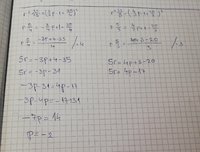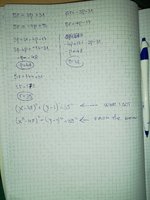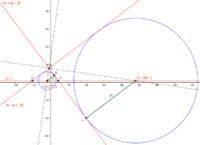Ana.stasia
Junior Member
- Joined
- Sep 28, 2020
- Messages
- 118
After taking the square root of both sides of an equation you should have 2 branches: left side = right side and left side = -(right side).

Try combining the positive=positive branch on the left with positive=negative branch on the right and vice versa.

If you are referring to my last suggestion: imagine the first equation didn't require taking the square root. What would you do with the positive=negative branch of the second equation? You would combine it with the first equation. Wouldn't it still make sense to do it when the first equation has its own positive=negative branch?Could you give me an explanation on why I got a correct answer like this?
It looks like the two radii are indeed respectively 5 and 35, not 39:I did so and got what I assume is the correct solution. I say assume because there are some differences, but I believe there was a typo in the book. See what I mean in the picture. Could you give me an explanation on why I got a correct answer like this? It feels like I am memorizing this problem rather than learning from it.

